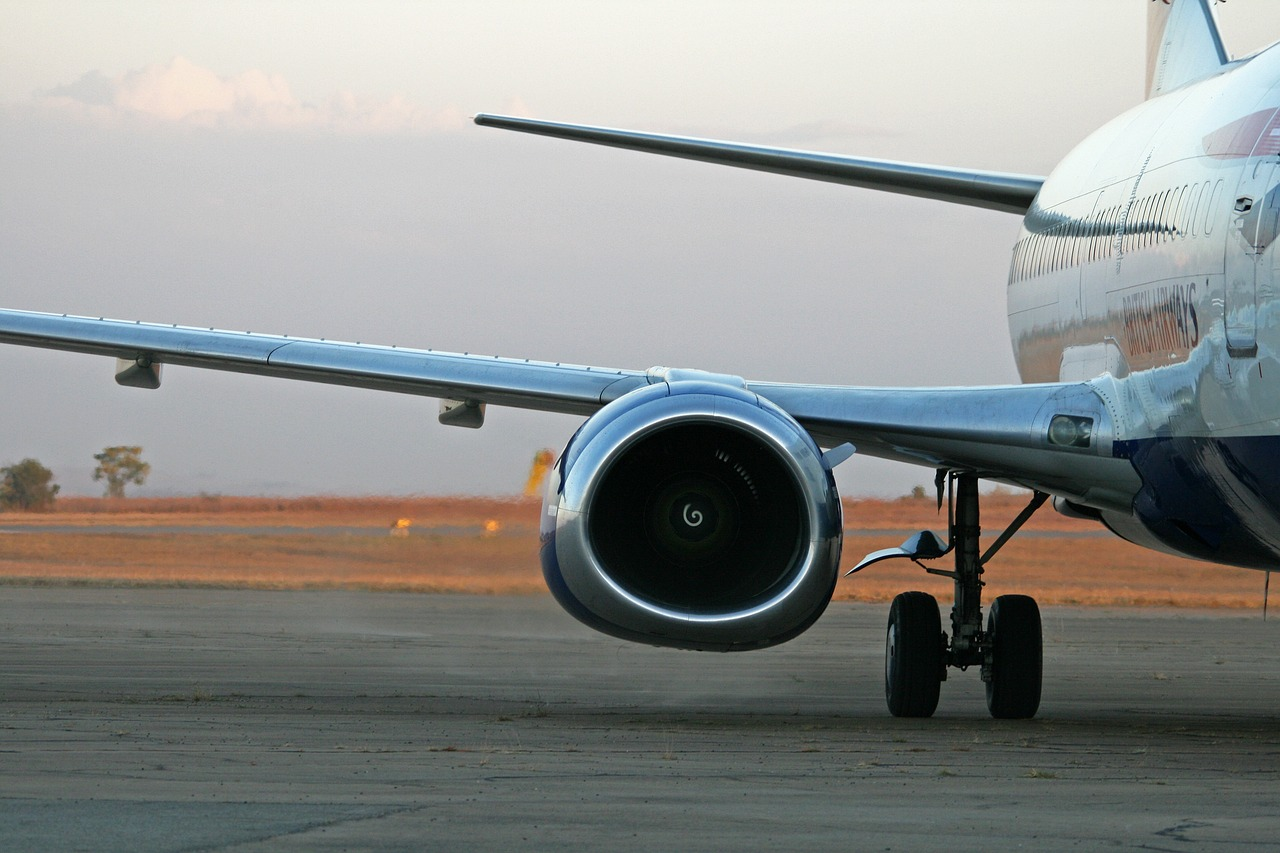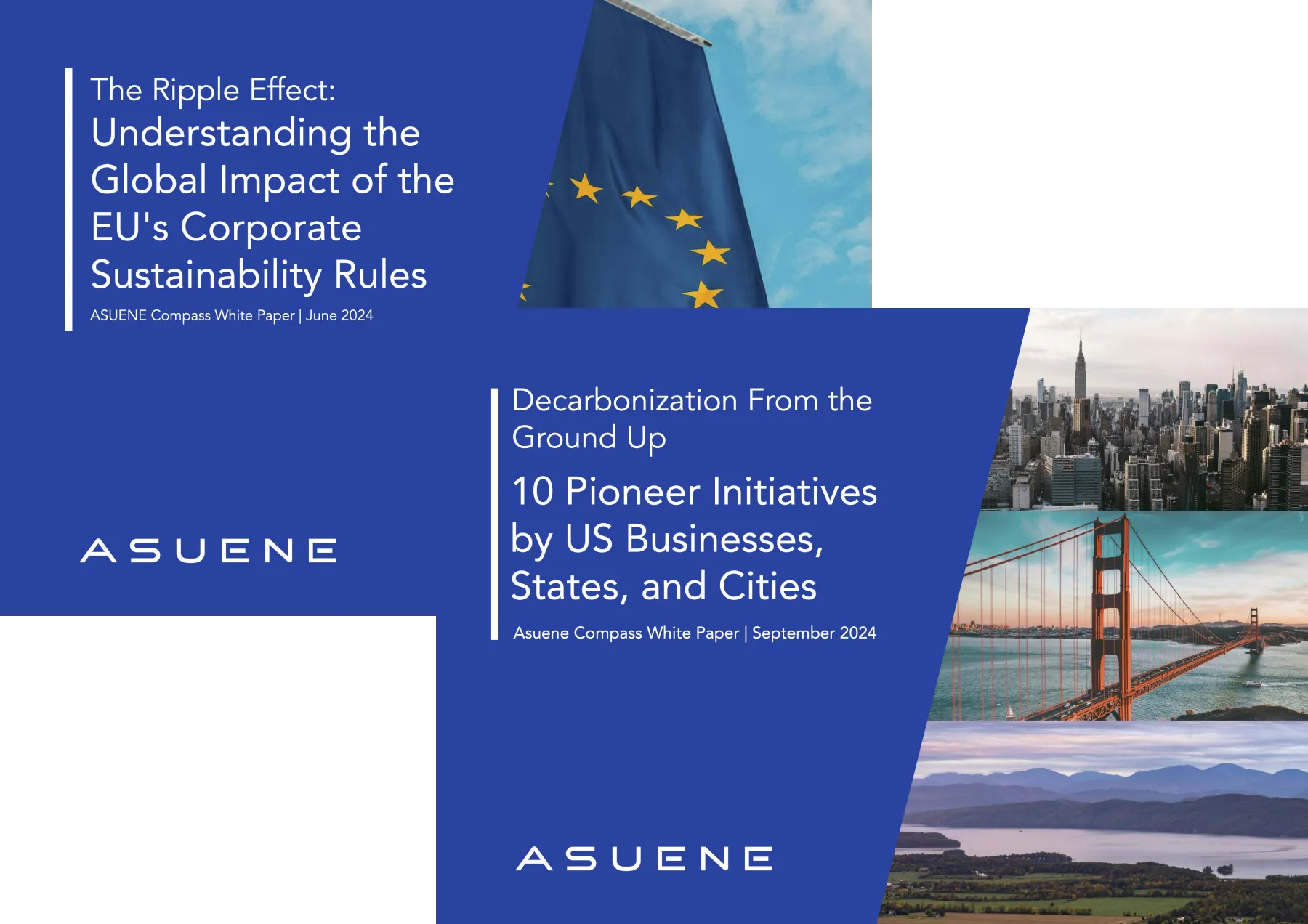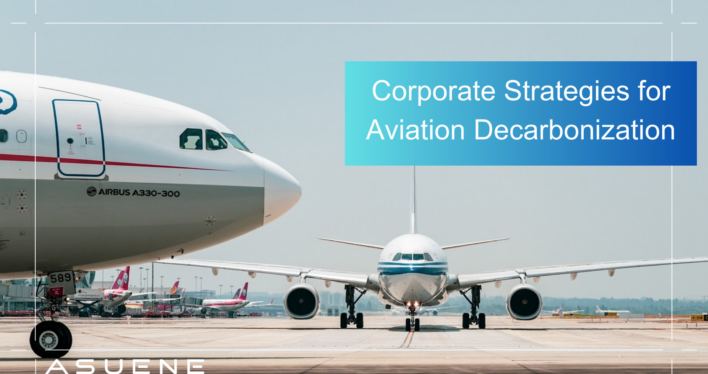- Article Summary
-
Aviation remains one of the most difficult sectors to decarbonize—yet one of the most visible components of a company’s carbon footprint. As corporate travel and air cargo continue to expand globally, sustainability leaders are under pressure to address emissions from aviation through a mix of operational change, alternative fuels, and offset strategies. This article explores how companies are integrating aviation-related emissions into their net-zero plans, the regulatory forces shaping the sector, and practical options for reducing and compensating for air travel emissions. Tools like Asuene can support measurement, reduction planning, and transparent reporting of aviation carbon impact.
Why Aviation Matters in Corporate Climate Strategy
Despite representing only 2.5% of global CO₂ emissions, aviation is disproportionately scrutinized because:
- It has a high carbon intensity per passenger or cargo unit.
- Emissions occur at high altitudes, contributing to non-CO₂ climate effects.
- Aviation is often associated with discretionary travel and executive operations.
For companies with frequent international travel or air-based logistics, aviation can account for 10–30% of Scope 3 emissions.

Regulatory Landscape: Aviation Faces Growing Climate Scrutiny
Aviation is no longer a blind spot in carbon policy. Recent developments include:
| Regulation or Initiative | Description | Status |
|---|---|---|
| CORSIA (ICAO) | Offsetting scheme for international aviation emissions | Voluntary → Mandatory in phases |
| ReFuelEU Aviation | Mandates minimum SAF blending in jet fuel across the EU | In effect from 2025 |
| EU ETS for Aviation | Requires airlines to surrender emission allowances for intra-EU flights | Expanded scope in 2024 |
| Carbon border policies | Could impact upstream fuel producers and aircraft manufacturers | Under discussion |
These rules are increasing costs and compliance burdens on airlines, which will likely be passed on to corporate clients.
Three Levers for Reducing Aviation-Related Emissions
A. Avoid and Reduce Travel
- Replace in-person meetings with virtual alternatives
- Implement internal policies limiting business-class or short-haul flights
- Consolidate international travel to reduce flight frequency
Example: A global consulting firm reduced its business travel CO₂ by 38% in 2022 by enforcing economy-class policies for trips under 5 hours and using virtual meetings as default.
B. Shift to Sustainable Aviation Fuels (SAF)
Sustainable Aviation Fuel can cut lifecycle emissions by 60–80% compared to fossil jet fuel.
| Fuel Type | Emissions Reduction | Commercial Readiness | Challenge |
|---|---|---|---|
| Bio-based SAF | 60–80% | Growing adoption | Feedstock limitations |
| Synthetic e-fuels | Up to 100% | Pilot phase | High production cost |
Corporate customers can support SAF adoption through:
- SAF purchasing agreements with airlines
- Participating in book-and-claim systems that decouple SAF use from physical flight
- Lobbying for SAF incentives in climate policy
C. Contribution: Unavoidable Emissions with High-Quality Credits
When air travel is essential, companies can neutralize emissions via carbon credits.
Key criteria for credible offsets:
- Additionality: Project wouldn’t happen without offset funding
- Permanence: CO₂ is stored long-term
- Verifiability: Third-party audited
- Co-benefits: Biodiversity, community, or water security
Preferred offset types include:
- Reforestation with 100-year permanence
- Direct Air Capture (DAC)
- Blue carbon (mangrove restoration)
Example: A tech firm allocates $25 per ton to purchase Gold Standard or Verra credits for all executive flights, reported annually in its sustainability report.
Measurement Is the Foundation: How to Quantify Aviation Emissions
To manage what you fly, you must first measure it.
Common Data Sources
| Data Type | Source | Accuracy |
|---|---|---|
| Flight distance | Travel booking systems | Medium |
| Class of service | Internal travel policies | Medium |
| Aircraft type/fuel data | Airline sustainability reports | High (if available) |
Emission factors can vary significantly by:
- Flight length (short-haul vs. long-haul)
- Aircraft efficiency
- Cabin class (business class = 2–3× economy)
Recommended Methodology
- Use DEFRA or ICAO emission factors for general estimation
- For more precision, use carrier-specific data if available
- Apply Radiative Forcing Index (RFI) multiplier (typically 1.9) to account for non-CO₂ effects

Integration into Corporate ESG Strategy
Aviation emissions should be included in:
- Scope 3, Category 6 (Business travel) and Category 9 (Downstream transport) under the GHG Protocol
- SBTi near-term targets
- CSRD and CDP disclosures
Key metrics to track:
| Metric | Purpose |
|---|---|
| CO₂ per passenger-kilometer | Measure of travel efficiency |
| % of flights offset or SAF-covered | Decarbonization progress |
| Total aviation emissions (Scope 3) | ESG reporting and trend monitoring |
Conclusion: From Carbon Cost to Strategic Choice
Aviation emissions are no longer a cost of doing business—they are a reputational, financial, and regulatory liability. But they also present a strategic opportunity:
- Innovate in virtual collaboration and travel behavior
- Demonstrate climate leadership through SAF and offsets
- Improve investor confidence via transparent disclosure
Managing aviation emissions requires the same rigor as other supply chain emissions—and tools that make data collection, analysis, and action planning seamless.
Asuene: Measure, Manage, and Reduce Aviation Emissions with Confidence
Asuene’s carbon management platform supports companies in measuring, analyzing, and reducing their air travel emissions in alignment with global best practices.
Key Features:
- Emission tracking for business travel by route, distance, class, and carrier
- Radiative forcing-adjusted emissions calculation
- SAF and offset integration with emissions dashboards
- Scenario planning (e.g., class policy changes, virtual substitution)
- Reporting aligned with CDP, GHG Protocol, and CSRD
Whether you’re managing corporate travel, sourcing air freight, or responding to ESG ratings, Asuene provides the clarity and confidence to lead on aviation sustainability.
Download Our Expert Publications!

Why Work with ASUENE Inc.?

ASUENE USA Inc., a subsidiary of Asuene Inc., is a key player in carbon accounting, offering a comprehensive platform that measures, reduces, and reports emissions, including Scope 1-3, with expertise in decarbonization and GRI compliance. Asuene serves over 10,000 clients worldwide, providing an all-in-one solution that integrates GHG accounting, ESG supply chain management, a Carbon Credit exchange platform, and third-party verification. With a strong focus on the manufacturing and construction sectors, ASUENE supports companies in achieving net-zero goals through advanced technology, consulting services, and an extensive network. While the article primarily emphasizes GRI 101, ASUENE’s role in biodiversity reporting may also be relevant, further reinforcing its value as a strategic partner in ESG disclosure and reduction efforts.
